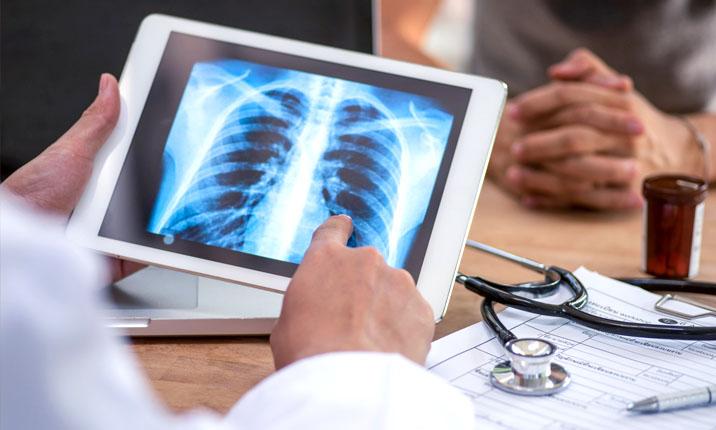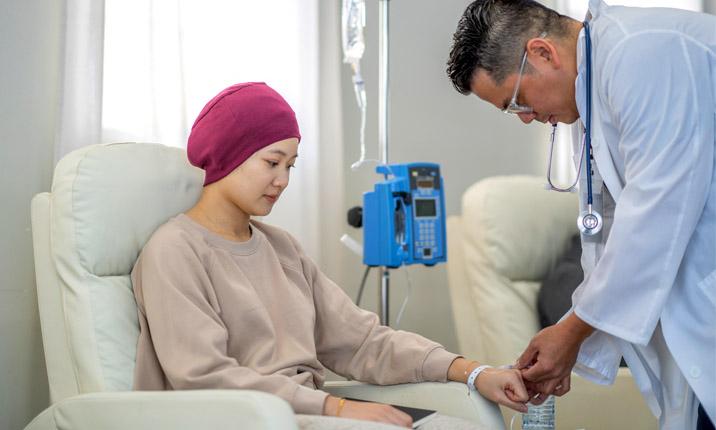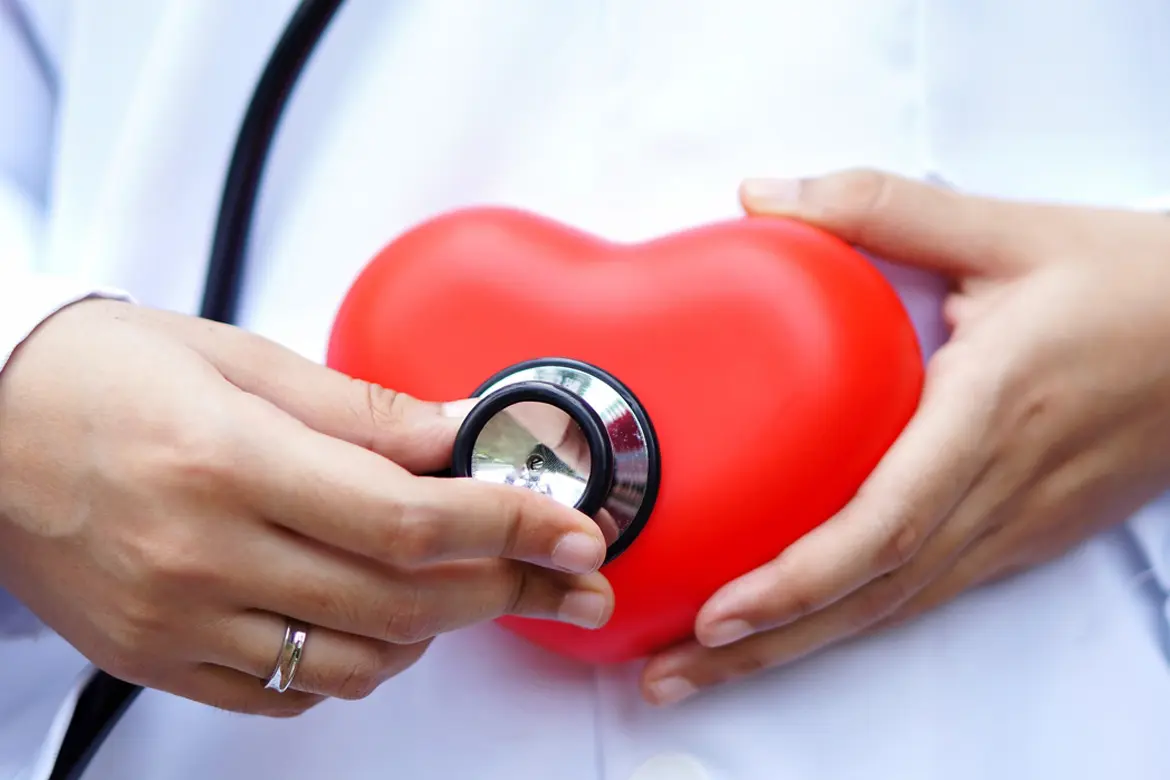What is lung cancer?
Lung cancer is cancer that starts in the lungs. It is caused by the uncontrolled growth of abnormal cells in the lung, and is the 3rd most common cancer in males and females in Singapore respectively. Between 2014 – 2018, 14% of all cancer incidences in males were from lung cancer and 7.5% for females. In Singapore, lung cancer is also the leading cause of cancer deaths (26.45%) in males, and accounts for 15.7% of cancer deaths in females.
There are 2 main types of lung cancer: small cell lung cancer (SCLC) and non-small cell lung cancer (NSCLC).
Small cell lung cancer (SCLC)
SCLC accounts for about 10 – 15% of all lung cancers. It is often called oat cell cancer because the cancer cells look like oats under a microscope. SCLC is usually more aggressive and grows faster than NSCLC. It is often associated with smoking and can spread quickly to other parts of the body.
Non-small cell lung cancer (NSCLC)
NSCLC is the most common type of lung cancer, accounting for about 85% of all lung cancers. There are 3 subtypes of NSCLC:
- Adenocarcinoma: This is the most common subtype, which starts in the glandular cells that produce mucus. It can occur in any part of the lung and is more common in non-smokers and women.
- Squamous cell carcinoma: This subtype starts in the thin, flat cells that line the airways of the lungs. It is usually found in the centre of the lung, near the bronchial tubes.
- Large cell carcinoma: This subtype is less common and can occur in any part of the lung. It tends to grow and spread quickly.
What is the leading cause of lung cancer?
Smoking is the leading cause of lung cancer, and it is estimated that about 80 – 90% of lung cancers are caused by use of tobacco products. Even smoking occasionally increases the risk of lung cancer and the risk goes up the more a person smokes and the longer they smoke.
When a person smokes, they inhale multiple harmful chemicals, such as tar, certain volatile organic agents and carbon monoxide, which can damage the DNA in the cells that line the airways. Over time, this damage can lead to the development of
cancerous cells. These harmful chemicals can also extend their effect throughout the whole body, resulting in cancers in almost any part of the body along with organ and vascular damage.
While smoking and exposure to second-hand smoke is the main cause of non-small cell lung cancer (NSCLC) (the most common type of lung cancer), non-smokers are also at risk. In Singapore, 25% of people living with lung cancer have never smoked.
What are other causes of lung cancer?
1) Family history of lung cancer. This may increase an individual’s risk for developing lung cancer. If you have a family history of lung cancer, it's important to talk to doctors about your individual risk and what steps you can take to reduce that risk. This may include quitting smoking, avoiding exposure to second-hand smoke, and regularly going for a lung health check if you're at high risk.
2) History of lung disease. Lung diseases such as chronic obstructive pulmonary disease (COPD) or tuberculosis can increase the risk of lung cancer.
3) Exposure to asbestos and other harmful substances. People who work with or are exposed to asbestos and other harmful substances or chemicals including coal dust, silica, chromates and arsenic, can increase the risk of lung cancer.
4) Exposure to radon. Radon is a naturally-occurring gas that is present in rock, soil and building materials. It is part of the natural background radiation that we are exposed to on a daily basis. In general, the risk of radon exposure in Singapore is believed to be low and that the effects of exposure may not become apparent for many years. You can reduce your exposure to radon by having your home tested and treated, if needed, with sealants for cracks in floors/walls, which are specially designed for this purpose. Increasing air flow into living spaces would also decrease radon exposure.
5) Air pollution. Exposure to polluting sources such as vehicle emissions, household combustion devices and industrial waste can increase the risk for lung cancer. According to the World Health Organization, air pollution kills an estimated 7 million people worldwide every year. Ambient air pollution is responsible for an estimated 16% of lung cancer deaths.
Screening for lung cancer
There are several screening tests that can be used to detect lung cancer:
- Low dose computed tomography (LDCT): This is a type of X-ray that uses a low dose of radiation to produce detailed images of the lungs. It is considered the most effective screening test for lung cancer. You may reach out to Parkway Shenton clinics for more information about this test.
- Chest X-ray: This is a traditional X-ray that produces images of the chest, including the lungs, heart, and blood vessels. However, chest X-rays are less sensitive than LDCTs and may not detect small tumours. In addition, chest X-rays expose patients to higher levels of radiation than low-dose CT scans.
- Sputum cytology: This test involves analysing a sample of mucus coughed up from the lungs to look for cancer cells.
- Bronchoscopy: This test involves inserting a thin, flexible tube equipped with a camera into the lungs through the nose or mouth to look for signs of cancer.
- Blood tests: Although not commonly used for screening, certain blood tests, such as protein or gene expression tests, may be used to detect lung cancer in certain cases.
Singapore’s Ministry of Health recommends that high-risk individuals undergo regular screening to detect lung cancer at an early stage, when it is more treatable. This would include individuals:
- Aged between 55 – 74, have smoked a pack of cigarettes per day for 30 years or more, and continue to smoke.
- Aged between 55 – 74, have smoked a pack of cigarettes per day for 30 years or more, and have quit smoking
The US Preventive Services Task Force (USPSTF) recommends annual screening for lung cancer with low-dose computed tomography (LDCT), a type of imaging that uses a low dose of radiation to produce detailed images of the lungs, for people who meet the following criteria:
- Aged 55 – 80
- Have a history of smoking of at least 30 pack-years (one pack-year is equal to smoking one pack of cigarettes per day for one year)
- Currently smoke or have quit smoking within the past 15 years
If you meet the above criteria lung cancer screening, you should discuss the benefits and risks of LDCT with your doctors.
If you're not a candidate for LDCT or if you prefer not to undergo the test, there are other ways to reduce your risk of lung cancer, such as quitting smoking, avoiding exposure to second-hand smoke and other lung irritants, as well as having a healthy lifestyle and diet.
How can we prevent lung cancer?
There is no sure way to prevent cancer, but you can reduce your risk by making healthy choices. It is also important to follow recommended screening guidelines which can help detect cancers early.
- Quit smoking: The single most effective way to prevent lung cancer is smoking cessation. If you are a smoker, quitting is the best thing you can do to reduce your risk of developing lung cancer. There are many resources available to help you quit, including nicotine replacement therapy, prescription medications, and behavioural counselling. Speak to your doctor to determine the best approach for you.
- Avoid exposure to second-hand smoke: The only way to protect ourselves and loved ones from the dangers of second-hand smoke is through 100% smoke-free environments.
- Reduce exposure to air pollution: Avoiding exposure to outdoor air pollution by changing your exercise and travel routes to avoid peak hours and reducing indoor air pollution through good ventilation, can help lower your risk of lung cancer.
- Get active: Regular exercise can help boost your immune system and reduce your risk of developing lung cancer.
- Good nutrition: A healthy diet that rich in fruits, vegetables, and whole grains can help reduce your risk of developing lung cancer.
- Get screened for lung cancer: If you are at high risk for lung cancer, consult your doctors about getting screened with a low-dose CT scan. This can help detect lung cancer early when it is more treatable.
It's important to keep in mind that lung cancer can develop even in people who have never smoked or been exposed to other risk factors. Therefore, regular check-ups with a doctor are important for catching any potential lung cancer early.
Learn more about cancer screening at Parkway Shenton.
How can lung cancer be treated?
The treatment for lung cancer depends on several factors, including the type and stage of the cancer, the patient's overall health, as well as their preferences. The main treatments for lung cancer usually include:
- Surgery. Surgery may be an option for patients with early-stage lung cancer. The goal of surgery is to remove the tumour entirely and, in some cases, surgery may be followed by chemotherapy or radiation therapy.
- Radiation therapy. Radiation therapy uses high doses of radiation to kill cancer cells and shrink tumours. It may be used alone or in combination with surgery or chemotherapy. There are 2 main types of radiation therapy: external beam radiation therapy and brachytherapy.
- Chemotherapy. Chemotherapy is the use of powerful drugs to destroy cancer cells. It may be given before or after surgery, or it may be used alone in patients with advanced lung cancer.
- Targeted therapy. Targeted therapy is a type of cancer treatment that uses drugs to target changes in cells that are involved in the growth and spread of cancer cells. It may be an option for patients with certain types of lung cancer.
- Immunotherapy. Immunotherapy is a type of cancer treatment that uses drugs to help the body's immune system fight cancer cells. It may be an option for patients with advanced lung cancer.
- Palliative care. Palliative care is a type of care that focuses on relieving symptoms and improving the quality of life for patients with advanced lung cancer. It may include pain management, social support and other treatments to help patients cope with the physical and psychological effects of the disease.
Remember that early detection for lung cancer can improve treatment outcomes.
Consult with our general practitioners (GPs) at Parkway Shenton clinics for a lung health check or go for a cancer screening today.















